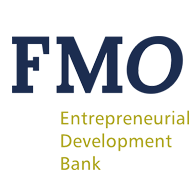


How gender lens investing is transforming women’s lives and driving business impact.
In 2017, FMO launched its Gender Strategy, aligning with the UN’s SDG 5 (gender equality) and SDG 10 (reduced inequalities). The strategy aimed to boost women’s economic growth and inclusion by enhancing gender considerations in ESG risk management, increasing opportunities for women’s inclusion, tracking gender indicators across all sectors, and focusing on financial inclusion for women entrepreneurs, and promoting women as nominee directors. Three public programs that FMO manages on behalf of the Dutch Ministry of Foreign Affairs, Access to Energy Fund, Building Prospects and MASSIF, have gender equality embedded in their impact ambitions, targeting women as end-users of products and services, as project affected people, as employees, as leaders, and entrepreneurs.
By 2024, FMO had made significant strides and recognized the need to update its gender approach, also to align it within FMO’s Strategy 2030 which highlights gender lens investments in the context of FMO’s SDG10 impact ambitions. FMO commissioned Dalberg Associates to assess the effectiveness of the Gender Strategy's implementation, examining its influence on driving gender-lens investments through three public programs: MASSIF, Access to Energy Fund, and Building Prospects. The evaluation also explored the broader indirect impact of investments on women’s lives through detailed case studies, covering the period from 2017 to 2023. Not included in this evaluation but central to FMO’s gender ambitions are FMO’s own balance sheet investments, and the innovative blended finance program NASIRA, which aims to support local banks on-lending to underserved young, female, and migrant entrepreneurs.
FMO integrated gender considerations throughout its investment process by steering capital towards reducing inequalities, setting targets within its Financial Institutions sector, and promoting gender diversity in Corporate Governance and on Environmental & Social (E&S) gender considerations. Technical assistance initiatives and monitoring impact indicators were also key components.
Between 2018 and 2023, FMO achieved €160 million in Gender Lens Investments across the three public funds, with MASSIF leading at 70%. The gender strategy’s focus on financial institutions, however, meant that potential gender impacts in the agriculture and energy sectors were less visible in the period of evaluation. This also resulted in less attention to internal tooling and support for the latter two sectors.
FMO aims to make a tangible difference in women’s lives. Case studies highlighted both successes and areas for growth. Customers’ strategies and motivations were key drivers of gender impact. FMO supported gender outcomes by raising gender-related questions during due diligence, requiring specific gender-focused investment objectives (such as investing in the microfinance company in Pakistan, SAFCO, allocating 50% of funding to women), and providing technical assistance (such as through the Value for Women technical assistance program).
The evaluation indicated that FMO customers not only target women effectively but also contribute positively to women’s livelihoods through various impact pathways. For example, Sistema.bio, financed by Acess to Energy Fund, has a customer base of 51% women in East Africa, and ALIVE, a Building Prospects investment, had 100% of its portfolio companies 2X compliant. A case study on Scatec’s Sukkur solar plant, an investment in Pakistan, focuses on women as project-affected people highlighting the positive impact that adding a gender lens to the E&S process can have, for example, women of resettled households receiving joint land ownership (50%) and a vulnerability allowance. Other positive outcomes included increased job opportunities, product use/access, and safety/security. Some of the identified challenges faced by our customers included navigating gender norms, financial literacy, and safety concerns.
FMO’s gender strategy has led to progress, as evidenced by its integration into the investment process and various gender initiatives. Investment staff appreciated the support from FMO’s technical assistance and sustainability advisory teams, as they helped empower people to have the right conversations, and the tools needed to move forward. However, gaps were identified regarding consistent internal awareness of the strategy and its governance, and consistent integration of gender in screening/due diligence. There is also scope for pre-investment technical assistance and enhanced monitoring and evaluation.
The evaluation estimates that the public programs can more than double the volume invested in Gender Lens Investing by capturing additional investments with gender impacts and being more intentional in applying a gender lens.
FMO’s journey with its gender strategy is a story of collaboration and commitment to gender equality. The evaluation provided actionable recommendations to strengthen FMO’s approach. FMO will launch its updated gender approach in 2025, incorporating insights from this evaluation. FMO will continue to raise awareness on this topic through internal and external presentations and trainings, to highlight the opportunities for gender impact and will continue to strive to realize gender impact in line with our Strategy 2030 via our investments, products and partnerships.
In picture employee of Sistema.bio, an Access to Energy Fund investment. Sistema.bio provides smallholder farmers in rural Kenya with biogas, a renewable energy source, and bioslurry, a biofertilizer that boosts crop yields and replaces chemical alternatives.
Genderlens case studies